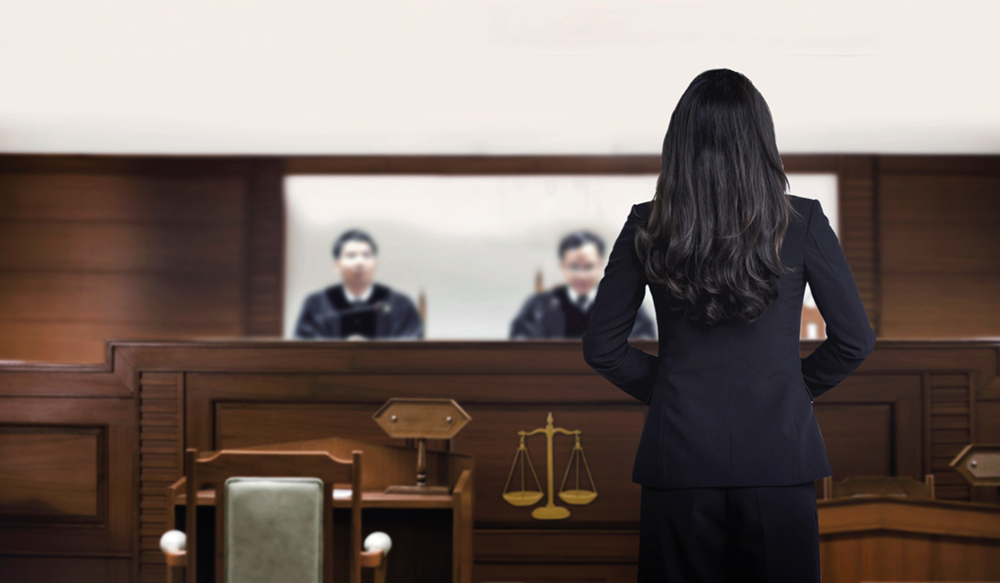Why Your Following Case Demands a Strong Trial Presentation: Insights and Techniques for Attorneys
Why Your Following Case Demands a Strong Trial Presentation: Insights and Techniques for Attorneys
Blog Article
Navigating the Complexities of Trial Presentations: Tips for Seamless Distribution and Engaging Disagreements
In the realm of lawful process, the art of test discussion stands as a critical component of success. The intricacies inherent in test discussions need a fragile balance of ability, method, and finesse.

Understanding Trial Purposes
To effectively navigate a test, it is important to have a clear understanding of the objectives that require to be attained. Before entering the court room, lawful groups have to define their goals and desired outcomes. These objectives work as assisting principles throughout the test, forming techniques and affecting decision-making processes.
Recognizing test objectives involves a detailed analysis of the case, legal criteria, and the client's benefits. Trial Presentations. It needs a meticulous assessment of the realities, identifying key problems, and expecting possible obstacles. By establishing measurable and particular goals, lawyers can customize their presentations and debates to line up with the desired outcomes
Moreover, a clear understanding of trial purposes allows lawful teams to prioritize evidence, witnesses, and lawful debates successfully. It allows for the development of a systematic story that reverberates with the judge and court, reinforcing the total case discussion.

Organizing Evidence Efficiently
Having a clear understanding of trial purposes lays the structure for organizing proof properly in lawful process - Trial Presentations. By aligning the discussion of proof with the wanted outcomes of the test, lawful groups can strengthen their disagreements and enhance their persuasiveness. One important aspect of arranging evidence is categorization. Organizing evidence based on styles or importance to particular lawful components can help streamline the discussion and make complicated details extra absorbable for the judge or jury.
An additional crucial element in arranging evidence successfully is developing a logical circulation. Offering proof in a coherent and sequential way can assist construct a compelling story that sustains the legal debates being made. In addition, making use of aesthetic help such as timelines, charts, or charts can further improve the organization of proof and aid in clarifying complex partnerships or series of occasions.
In addition, making sure that all evidence offered is pertinent and permissible to the situation is essential. Irrelevant or inadmissible proof can interfere with the strength of the disagreement and possibly harm the reliability of the here and now party. A precise testimonial and choice process ought to be undertaken to include just the most lawfully audio and impactful proof in the trial discussion.
Crafting Influential Stories
Crafting compelling narratives plays an essential role in presenting persuasive arguments throughout legal process. When constructing a narrative for a test discussion, it is crucial to develop a clear story that highlights essential points and attaches them in a meaningful way. By weaving with each other proof, testimony, and legal disagreements right into a cohesive see and convincing story, legal professionals can effectively support for their clients and boost the likelihood of a desirable result in the court.
Understanding Aesthetic Help
Reliable use visual aids is essential to enhancing the impact and quality of test discussions. Visual help, when utilized strategically, have the power to streamline intricate info, reinforce crucial factors, and leave an enduring perception on the discretionary. To grasp visual help in test discussions, it is vital to make sure that they are clear, succinct, and appropriate to the disagreements being made.
When including aesthetic aids, such as graphes, photographs, timelines, or charts, into a test discussion, it is important to maintain them visually appealing yet specialist. The visuals need to match the spoken arguments, providing a visual depiction of the info being discussed without overwhelming the target market with unnecessary details.
Furthermore, exercising with the visual aids in advance is necessary to make certain a smooth delivery during the trial. Familiarizing oneself with the material, changes, and timings of each aesthetic aid can assist maintain the flow of the discussion and prevent technical glitches that may emerge.
Providing Impactful Closing Arguments
An engaging closing disagreement serves as the culmination of a trial discussion, encapsulating the core narrative and encouraging the court and jury in the direction of a favorable decision. Begin by laying out the major arguments that sustain your customer's placement, highlighting why the evidence offered throughout the trial sustains your narrative.
Furthermore, integrating psychological allure can better reinforce your closing argument. Ultimately, a well-crafted closing disagreement should leave a long lasting impression, engaging the judge and court to rule in your client's favor.
Final Thought
Finally, understanding trial presentations involves comprehending objectives, organizing evidence, crafting narratives, using visual help, and supplying impactful closing arguments. By implementing these methods successfully, lawyers can provide their situation seamlessly and make compelling debates in the courtroom. It is vital to browse the complexities of test discussions with accuracy and skill to accomplish success in lawful process.
By aligning the discussion of proof with the preferred results of the test, lawful teams can reinforce their arguments and enhance our website their persuasiveness (Trial Presentations). To grasp visual aids in test presentations, it is crucial discover this to ensure that they are clear, concise, and appropriate to the disagreements being made
An engaging closing argument offers as the conclusion of a trial presentation, enveloping the core narrative and persuading the judge and court towards a beneficial decision. Begin by outlining the major arguments that sustain your client's setting, stressing why the evidence provided throughout the trial supports your story.In final thought, understanding test discussions includes recognizing purposes, arranging proof, crafting stories, using aesthetic aids, and delivering impactful closing arguments.
Report this page